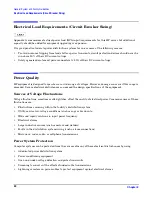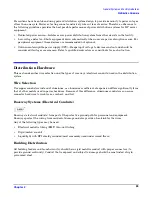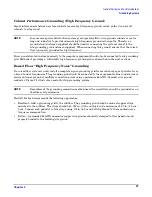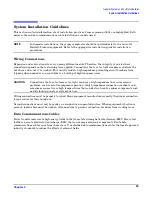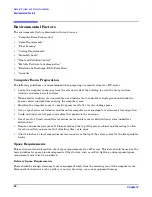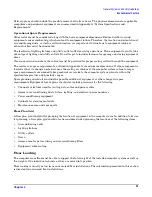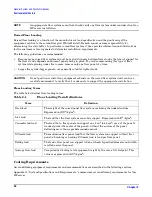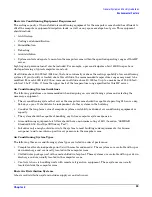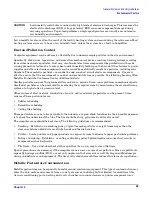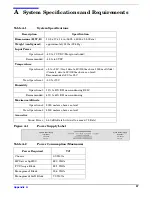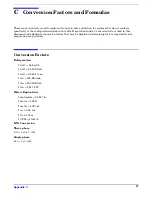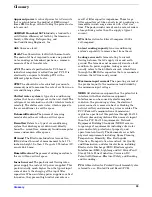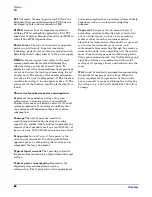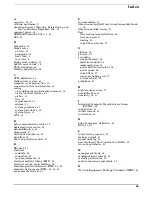
Chapter 2
General System and Facility Guidelines
Environmental Factors
36
Because metallic particulates conduct electricity, they have an increased potential for creating short circuits
in electronic equipment. This problem is exaggerated by the increasingly dense circuitry of electronic
equipment.
Over time, very fine whiskers of pure metal can form on electroplated zinc, cadmium, or tin surfaces. If these
whiskers are disturbed, they may break off and become airborne, possibly causing failures or operational
interruptions. For over 50 years, the electronics industry has been aware of the relatively rare but possible
threat posed by metallic particulate contamination. During recent years, a growing concern has developed in
computer rooms where these conductive contaminants are formed on the bottom of some raised floor tiles.
Although this problem is relatively rare, it may be an issue within your computer room. Since metallic
contamination can cause permanent or intermittent failures on your electronic equipment, Hewlett-Packard
strongly recommends that your site be evaluated for metallic particulate contamination before installation of
electronic equipment.
Electrostatic Discharge (ESD) Prevention
Static charges (voltage levels) occur when objects are separated or rubbed together. The voltage level of a
static charge is determined by the following factors:
•
Types of materials
•
Relative humidity
•
Rate of change or separation
Follow these static protection measures to minimize possible ESD-induced failures in the computer room:
•
Maintain recommended humidity level and airflow rates in the computer room.
•
Install conductive flooring (conductive adhesive must be used when laying tiles).
•
Use conductive wax if waxed floors are necessary.
•
Ensure that all equipment and flooring are properly grounded and are at the same ground potential.
•
Use conductive tables and chairs.
•
Use a grounded wrist strap (or other grounding method) when handling circuit boards.
•
Store spare electronic modules in antistatic containers.
Acoustics
Computer equipment and air conditioning blowers cause computer rooms to be noisy. Ambient noise level in a
computer room can be reduced as follows:
•
Dropped ceiling—Cover with a commercial grade of fire-resistant, acoustic rated, fiberglass ceiling tile.
•
Sound deadening—Cover the walls with curtains or other sound deadening material.
•
Removable partitions—Use foam rubber models for most effectiveness.



